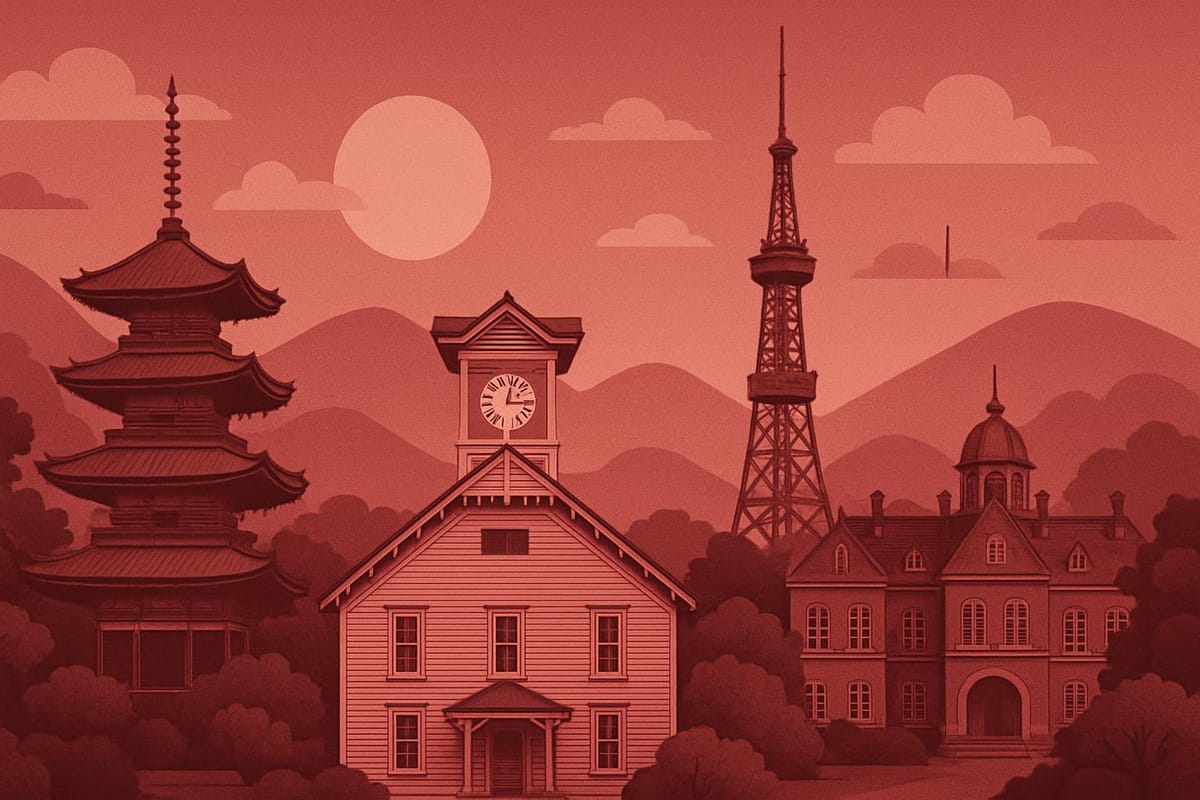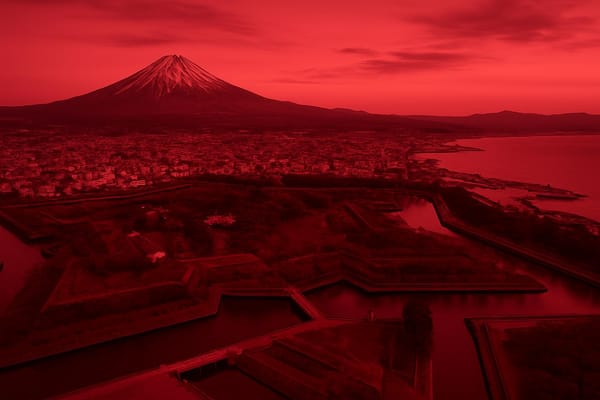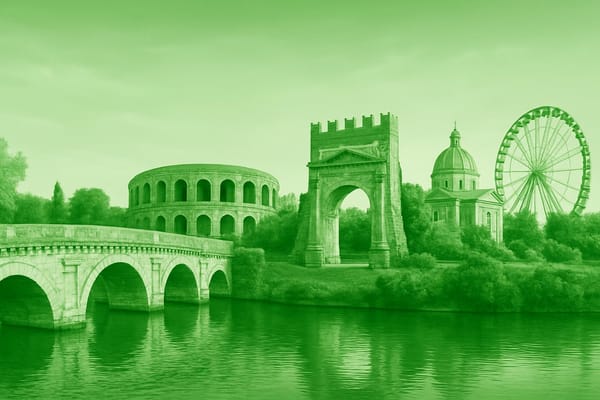Sapporo
Explore iconic snow festival sculptures, famed miso ramen, craft beer and alpine skiing.

Important things to know about Sapporo
Sapporo, Japan, is a dynamic northern city on the island of Hokkaido that blends modern urban life with a strong sense of regional identity; home to about two million residents, it operates as Hokkaido’s administrative, economic and cultural hub, offering a distinctive rhythm shaped by its cold climate and long winters. The city’s grid layout and broad avenues reflect deliberate planning that eases navigation and supports efficient municipal services, while its neighborhoods balance residential calm with busy commercial corridors, coworking hubs and small independent businesses. Sapporo’s economy mixes traditional resources with contemporary sectors - agriculture and food processing, technology startups, medical research and higher education institutions such as a major university - creating a diversified labor market and a steady influx of students and professionals. Public transportation is well-integrated, with rail and bus networks that connect suburbs to the central wards, facilitating commuting and sustainable mobility. Urban design and infrastructure emphasize resilience: buildings, roads and municipal systems are adapted for heavy snow and seasonal shifts, and the local public services maintain reliability through cold months. The culinary scene and local markets reflect Hokkaido’s bounty, with emphasis on fresh seafood, dairy and regional specialties that feed both everyday life and a culture of food craftsmanship. A blend of practical urbanism, academic vitality, and seasonal character makes Sapporo a city that functions as a year-round center for innovation, living and regional identity in northern Japan.
Sightseeing hot-spots in Sapporo
Sapporo, the vibrant capital of Hokkaido, offers a rich blend of urban energy and natural beauty that makes it a top destination for sightseeing in northern Japan. Stroll along Odori Park to see seasonal flowerbeds and the iconic Sapporo TV Tower, then explore the historic Sapporo Clock Tower and nearby Nijo Market for fresh seafood. In winter, the city transforms for the famous Sapporo Snow Festival, when massive ice sculptures and illuminated displays draw visitors from around the world, creating unforgettable photo opportunities and festival atmospheres.
Beyond the central attractions, you can taste local culture and cuisine throughout the city. Head to Susukino for lively nightlife and ramen alleys serving hearty miso ramen, or visit the Sapporo Beer Museum to learn about brewing history and sample local brews. Families and chocolate lovers will enjoy Shiroi Koibito Park, while history buffs can wander the Historical Village of Hokkaido for a glimpse of regional life in bygone eras. For panoramic city views, take the ropeway up Mount Moiwa at sunset-its observation deck is especially romantic and gives a sweeping perspective of Sapporo’s grid-like streets and surrounding mountains.
Sapporo is also an ideal base for exploring the wider natural attractions of Hokkaido year-round, from skiing and snowshoeing in winter to cherry blossoms and hiking in spring and summer. Efficient transport links, including JR lines and a convenient subway network, make it easy to combine urban sightseeing with day trips to hot springs, national parks, and coastal towns. Whether you’re planning a short city break or a longer Hokkaido adventure, Sapporo’s mix of festivals, food, and scenic viewpoints ensures plenty of memorable things to do in Sapporo.
Hotels to enjoy in Sapporo
Sapporo offers a rich range of Sapporo hotels that suit every travel style, from compact business stays to spacious luxury properties near city sights. Staying near Odori Park or Sapporo Station gives easy access to major attractions, while the lively Susukino district puts nightlife, dining, and entertainment at your doorstep. Many travelers searching for "hotels in Sapporo" prioritize proximity to the subway for efficient sightseeing - whether visiting the historic clock tower, sampling fresh seafood at Nijo Market, or taking a day trip to nearby ski resorts. Winter visitors should consider hotels that advertise conveniences like luggage storage, heated floors, and proximity to shuttle services during the Snow Festival, when demand spikes and availability tightens.
Choosing the right Sapporo accommodation comes down to purpose: families often prefer larger rooms and on-site amenities, while solo travelers may opt for compact, budget-friendly options that maximize location over space. Business travelers appreciate properties with reliable Wi-Fi and meeting facilities, and those seeking relaxation should look for hotels with an onsen or spa offering hot-spring baths. Booking in advance and comparing cancellation policies helps secure the best rate, and reading recent guest reviews provides practical insights into cleanliness and service. Whether you’re drawn by winter sports, gourmet ramen, or seasonal festivals, thoughtful selection among hotels in Sapporo ensures a comfortable stay that enhances your Hokkaido experience.
Restaurants to try in Sapporo
Sapporo is a food lover’s paradise where Sapporo restaurants showcase the best of Hokkaido ingredients, from ocean-fresh seafood to hearty mountain produce. The city’s dining scene ranges from cozy izakaya and lively ramen shops to elegant sushi counters and modern fine dining, making dining in Sapporo an adventure for every palate. Popular areas like Susukino and the district around Sapporo Station offer both late-night eats and refined tasting menus, while markets such as Nijo Market serve up vibrant displays of crab, uni, and kaisendon that epitomize the region’s bounty. Sapporo’s culinary identity blends tradition and innovation: expect classic miso ramen from the famed ramen alleys, inventive soup curry, and seasonal seafood that highlights why the restaurants of Sapporo are celebrated across Japan.
When planning where to eat in Sapporo, look for specialties that tell the story of the island-rich Hokkaido crab, melt-in-your-mouth sushi, and the grilled mutton called jingisukan that locals love. The city is also known for its craft beer scene and the historic Sapporo Beer culture, perfect with a plate of bar snacks or at the beer garden in summer. Whether you seek budget-friendly bowls of ramen, fresh seafood donburi at market stalls, or upscale tasting courses using local dairy and produce, Sapporo offers memorable meals that satisfy SEO-minded searches for “best restaurants in Sapporo,” “Sapporo food scene,” and “where to eat in Sapporo.” Exploring neighborhoods at different meal times reveals a dynamic mix of flavors and experiences that make Sapporo a must-visit destination for food travelers.
Best shopping stops in Sapporo
Sapporo is a delight for anyone interested in shopping in Japan, blending modern malls with traditional markets and covered arcades. Start your exploration along Tanukikoji, the long, weather-proof shopping street where you can find everything from fashion and electronics to quirky souvenirs and local snacks; nearby, the underground malls like Pole Town and Aurora Town keep shoppers warm in winter and connect the city’s main stations. Around Sapporo Station the JR Tower complex and Stellar Place sit beside major department stores such as Daimaru and Sapporo PARCO, offering international brands, designer boutiques and duty-free services that make Sapporo shopping convenient for visitors. For a contrasting experience, the historic Sapporo Factory, housed in a former brewery, combines outlet-style shops, craft stores and cafes in a charming brick setting, while the bustling Nijo Market is unbeatable for fresh Hokkaido seafood and ready-to-eat delights.
When thinking about what to buy in Sapporo, emphasize Hokkaido specialties: rich dairy products, cheeses, and popular sweets like Shiroi Koibito and other regional confectioneries that travel well as gifts. Fashion lovers will appreciate the mix of trendy boutiques and large retail chains, and foodies can stock up on premium seafood, crabs and uniquely Hokkaido seasonings. Shopping in Sapporo also means catching seasonal sales, local craft markets and the vibrant evening scene around Susukino, where dining and late-night shopping blend seamlessly. Whether you’re hunting for souvenirs in Sapporo, exploring department store floors for the latest trends, or sampling market-fresh seafood, the city’s diverse retail landscape makes shopping in Sapporo an unforgettable part of any Hokkaido trip.
Nightlife highlights in Sapporo
Sapporo nightlife comes alive as the sun sets over Hokkaido, and the neon-soaked streets of Susukino offer an intoxicating mix of late-night dining, bars, and entertainment. Wander down narrow alleys where tiny izakaya pour local sake and serve grilled seafood straight from Hokkaido waters, or sit at a lively ramen shop for a steaming bowl of Hokkaido ramen after a night of exploring. Beer lovers will find a thriving scene of craft beer pubs and the historic Sapporo beer legacy, while food-focused night markets and open-air stalls tempt with fresh crab, jingisukan and other regional specialties. The balance of traditional hospitality and modern nightlife makes Sapporo a standout destination for after-dark culinary adventures and memorable evenings.
Beyond food, the city pulses with music and late-night culture, from intimate jazz bars and live houses showcasing local talent to energetic clubs where DJs spin until dawn. Karaoke remains a beloved pastime, offering private rooms for groups to sing their hearts out, and seasonal events like summer beer gardens and winter illumination add special touches to the Sapporo nightlife calendar. Whether you prefer a quiet bar with a scenic view or a bustling entertainment district to dance and socialize, Sapporo’s varied nighttime offerings deliver authentic Hokkaido charm and nonstop urban excitement.
Getting around in Sapporo
Sapporo's air and rail connectivity is centered on New Chitose Airport, about 45 kilometers southeast of the city, which offers fast and frequent rail links to central Sapporo: the JR Airport Rapid service connects New Chitose Airport to Sapporo Station in roughly 37 minutes, making the airport-to-city transfer predictable and convenient for travelers; buses and airport limousine services provide alternative routes to downtown and regional destinations, especially useful when carrying luggage or reaching hotels, and tend to take longer depending on traffic. Within the city, the Sapporo subway network (Namboku, Tozai, Toho lines) and the JR lines converge at major hubs like Sapporo and Odori, with the JR Hokkaido network offering frequent commuter trains and limited-express services to regional cities such as Otaru and Asahikawa; IC cards like Kitaca and interoperable cards (Suica/PASMO) simplify transfers across trains, subways and buses. Travelers should note that heavy winter snow can occasionally slow services, but punctuality and snow-clearing efforts keep Sapporo’s airport and train systems reliable year-round, making access to the city efficient for both short stays and wider Hokkaido travel.
History of Sapporo
The history of Sapporo stretches from its origins as land of the Ainu people to a modern northern metropolis and is central to understanding Hokkaido’s transformation. The name Sapporo likely derives from the Ainu phrase “sat poro pet”, roughly meaning “dry, great river,” and the area remained sparsely populated until the late 19th century. With the Meiji era emphasis on national modernization, the central government established the Hokkaido Development Commission and promoted settlement, agriculture, and industry in the region. The founding of the Sapporo Agricultural College in the 1870s, where the influential American educator William S. Clark briefly served, helped shape the city’s role as an agricultural and educational hub; the adjacent Sapporo Clock Tower endures as one of the oldest Western-style buildings and a symbol of early city development. Industrial pioneers like the Sapporo Beer brewery, created in the same era, anchored early economic growth while the city’s grid plan and deliberate urban layout reflected modern planning ideals that guided expansion across the fertile Ishikari Plain.
Throughout the 20th century Sapporo evolved from a regional administrative center into a bustling Sapporo city known for winter culture, tourism, and innovation. Postwar reconstruction and rapid economic growth accelerated urbanization, and the city’s international profile rose sharply when it hosted the 1972 Winter Olympics, the first Winter Games in Asia, which spurred major infrastructure investment and tourism development. Cultural events such as the Sapporo Snow Festival, which began as a local winter celebration, now draw millions to admire massive snow sculptures in Odori Park and beyond, highlighting how the city’s history intertwines with seasonal identity. Today Sapporo combines historic sites like Hokkaido University’s historic buildings and local food traditions such as ramen and brewery culture with modern transit, parks, and business districts. The layered history of Sapporo-from Ainu heritage and Meiji-era colonization to Olympic legacy and contemporary urban life-continues to shape its role as Hokkaido’s cultural and economic heart, making it a primary destination for visitors seeking both history and vibrant city experiences.



